Kabul is the largest city and the capital of Afghanistan. Kabul, known to have existed since the 1,500s, was founded on the road from the south of the Hindukush Mountains to India.

The valley where the city is located is surrounded by fertile soil. On the banks of the Kabul River, passing through the city, there are narrow and curved streets, the old town and the marketplace, the palace of the Kingdom, and the new city with its contemporary buildings.
Kabul came under Arab rule in the 7th century and was destroyed at various times and rebuilt many times.
Where is Kabul?
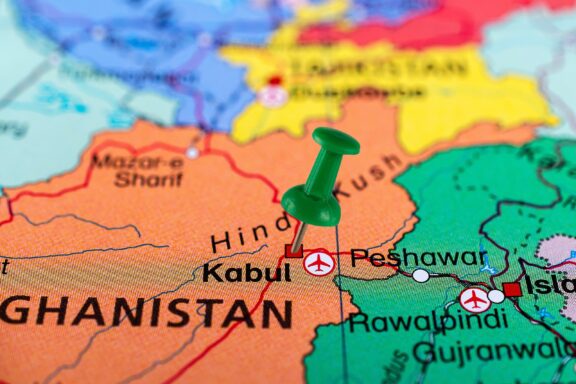
Kabul is the capital and largest city of Afghanistan. It’s located in the eastern section of the country, specifically in the Kabul Province. It’s situated at an elevation of approximately 1,800 meters (5,900 feet), making it one of the highest capitals in the world.
Kabul is surrounded by the rugged and striking beauty of the Hindu Kush mountains, and the city is situated along the Kabul River. It’s roughly at the crossroads of the north-south and east-west trade routes across Central Asia, which has made it a strategic location for many empires over the centuries.
History of Kabul
Kabul is one of the world’s oldest cities, with a rich and complex history shaped by its strategic location along trade routes, making it a desirable target for many empires. Kabul’s history dates back to at least the 3rd millennium BCE, over 5,000 years old. It was a center of Zoroastrianism, followed by Buddhism. Its strategic location along the Silk Road made it an important trade center between the Indian subcontinent, Persia, and Central Asia.
In the early 7th century, Kabul was invaded by the Muslim Arab armies, marking the introduction of Islam to the region. It was subsequently ruled by a series of dynasties, including the Samanids, Ghaznavids, Ghorids, and Khwarazmians.
The Mongols, under Genghis Khan, invaded in the early 13th century, causing significant destruction. In the late 14th century, it was reconstructed and developed under the rule of Timur.
In recent history, Kabul modernized and Westernized under the reign of King Amanullah Khan. However, political instability in the 1970s culminated in a coup, triggering a period of conflict, including the Soviet-Afghan War, the Afghan Civil War, and the U.S. invasion.
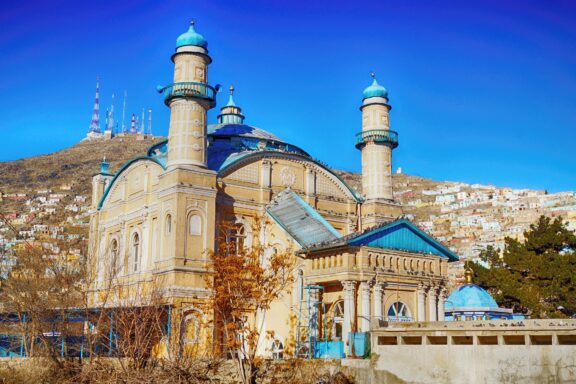
From 1996 to 2001, Kabul was controlled by the Taliban, a hardline Islamic group. Many of Kabul’s historical treasures, including the Buddhas of Bamiyan, were destroyed during this period.
In 2001, following the September 11 attacks, the U.S. led an invasion that ousted the Taliban from power. However, instability persisted, and in 2021, the Taliban recaptured Kabul after a rapid advance.
Features of Kabul
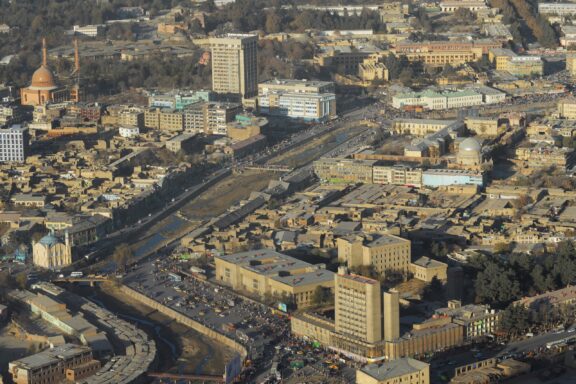
Kabul has many features that make it noteworthy and desirable, many of which are linked to its rich history and strategic location. It’s an ancient city with a rich cultural and historical heritage. It is home to many historical landmarks, such as the gardens of Babur, the Kabul Museum, the mausoleums of Timur Shah and Nadir Shah, and the Id Gah Mosque.
Geography and Climate
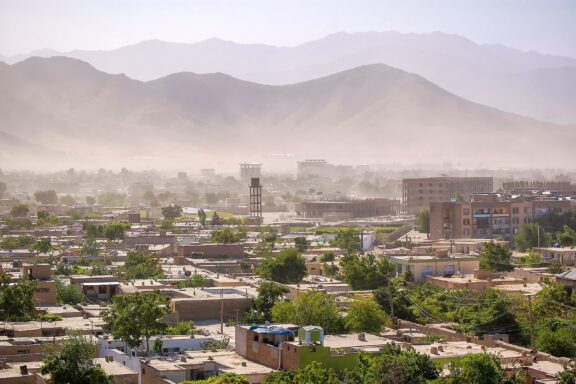
Kabul is situated in eastern Afghanistan, in a valley between the Hindu Kush mountains along the Kabul River. The city stands at an elevation of approximately 1,800 meters (5,900 feet), which makes it one of the highest capitals in the world.
The climate of Kabul is semi-arid, with four distinct seasons.
- The summers (June to September) can be hot, with temperatures reaching up to 35 °C (95 °F), but nights are usually cool.
- The winters (December to February) are cold and often snowy, with temperatures often dropping below freezing.
- Spring (March to May) and Autumn (October to November) are mild and generally considered Kabul’s most pleasant seasons.
Population
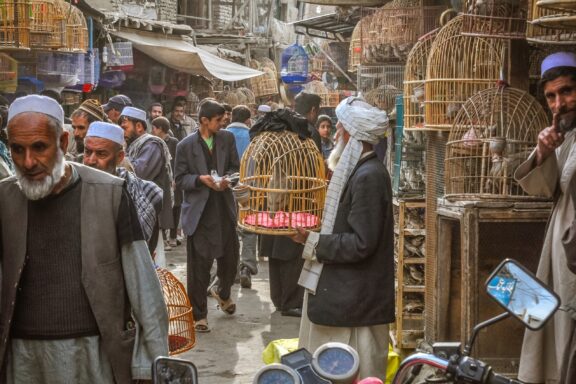
The exact population of Kabul is still being determined due to significant internal displacement and migration, but estimates suggest it may be around 4-5 million people. The city is diverse and home to many different ethnic groups. Pashtuns and Tajiks are likely the most numerous, but significant numbers of Hazaras, Uzbeks, and other groups are also present.
Dari (Afghan Persian) and Pashto are the most widely spoken languages, with Dari as the lingua franca. Islam is the dominant religion, with most residents identifying as Sunni Muslims, but there is also a significant Shia Muslim minority, particularly among the Hazara population.
Economy
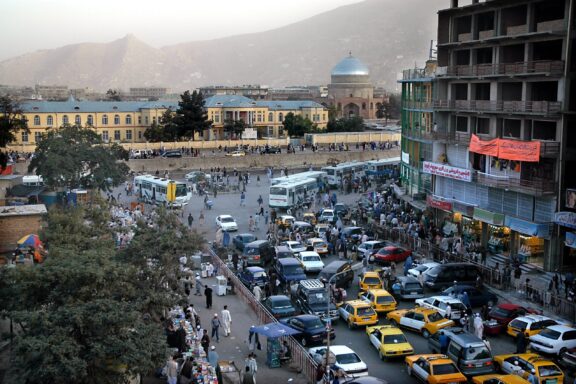
Kabul is the economic center of Afghanistan. The economy is diverse and includes a mix of modern industries and traditional crafts. Textiles, furniture, and chemicals are key industries.
Agriculture is also an essential part of the economy, particularly in the fertile surrounding valley, where fruits and vegetables are grown.
The service sector is substantial, with a growing emphasis on telecommunications, construction, and retail. Kabul’s strategic location at the crossroads of major trade routes has made it a central hub for trade in Central Asia, and many goods pass through the city’s markets.
However, the economy has faced many challenges due to political instability and conflict, including corruption, lack of infrastructure, and a large informal economy. Aid from international donors has been a significant source of economic support in recent decades.
Things to Do and Places to See in Kabul
Currently, Kabul is not recommended to visit due to ongoing political instability, violent conflict, armed robberies, and terrorism.
However, if you decide to go, here are the city’s most frequented and enthusiastically endorsed attractions and destinations:
1. The Gardens of Babur (Bagh-e Babur)
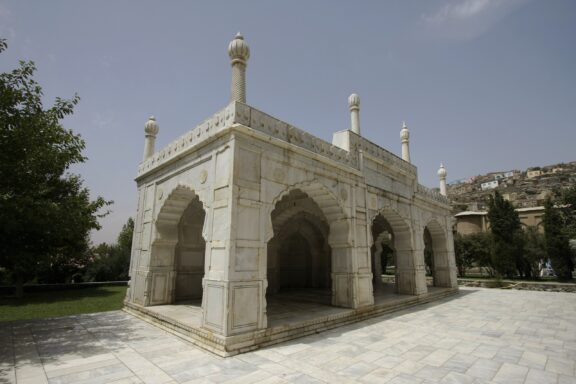
This beautiful and tranquil oasis in the heart of Kabul is the final resting place of Babur, the first Mughal Emperor. The site was chosen by Babur himself, who wanted his remains to be buried in a garden. It represents a fine example of Islamic landscape architecture and is one of the earliest surviving Mughal gardens.
It has been renovated recently and now features terraces, flowing water, and various plants and trees, embodying the concept of paradise in Islamic culture.
2. The Kabul Museum (The National Museum of Afghanistan)
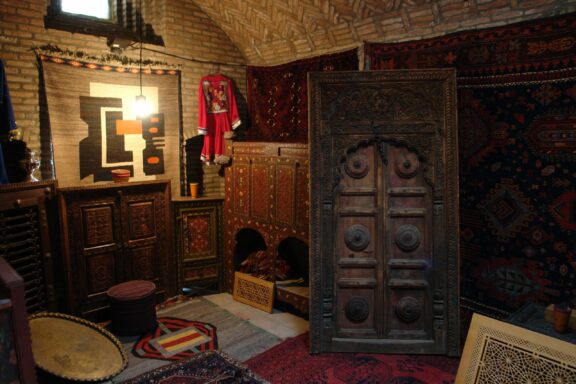
This museum is one of the most important cultural institutions in Afghanistan. It houses an extensive collection of artifacts showcasing the diverse and rich history of the region, spanning from prehistoric times through the Islamic period.
Its collections include Greek and Buddhist art, Afghan crafts, and more, though unfortunately, many pieces were lost or destroyed during the civil war and Taliban rule.
3. The Kabul Bazaar (Chicken Street)
Chicken Street has long been the center of Kabul’s expatriate and tourist shopping district. Named for its former poultry sellers, the bazaar is renowned for its selection of Afghan rugs, jewelry, antiques, and other handicrafts. It offers a vibrant and colorful glimpse into local commerce and craftsmanship.
4. The Kabul Citadel (Bala Hissar)
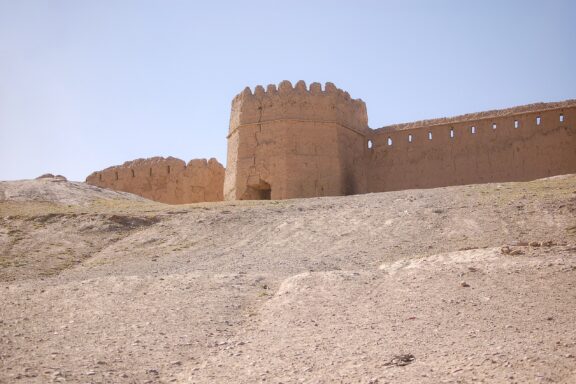
This ancient fortress has stood guard over Kabul for centuries. While partially ruined, it still offers an impressive view of the city and the surrounding areas. Bala Hissar has witnessed many tumultuous events in Kabul’s history, and its walls bear the scars of countless battles.
5. The Id Gah Mosque
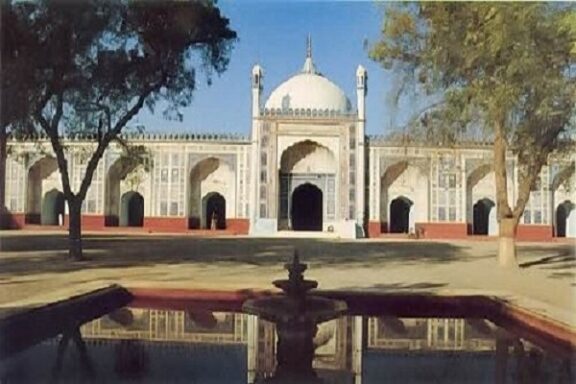
One of Kabul’s most significant religious sites, the Id Gah Mosque, is a large and grand mosque known for hosting thousands of worshippers, especially during Islamic holidays like Eid. It’s a fine example of Islamic architecture and a focal point of Kabul’s religious life.
Image Sources and Copyright Information
- image-46: © Mappr
- Map Pinpointing Kabul in Afghanistan: © PredragLasica/Shutterstock
- Mosque with Blue Domes Against Hillside: © h ahmadi/Shutterstock
- Aerial View of Kabul Cityscape: © Wandel Guides/Shutterstock
- Hazy Skyline of Kabul with Mountains in the Background: © Wandel Guides/Shutterstock
- Bustling Marketplace in Old Town Kabul: © Michal Knitl/Shutterstock
- Bustling Street Scene in Kabul City Center: © Jono Photography/Shutterstock
- Mughal Style Mosque in Gardens: © knovakov/Shutterstock
- Interior View of Kabul Museum Display: © Luks23/Shutterstock
- Bala Hissar Fortress in Kabul: © Wandel Guides/Shutterstock
- Mosque with Reflecting Pool: © Williard84/Wikimedia | CC BY-SA 4.0 International